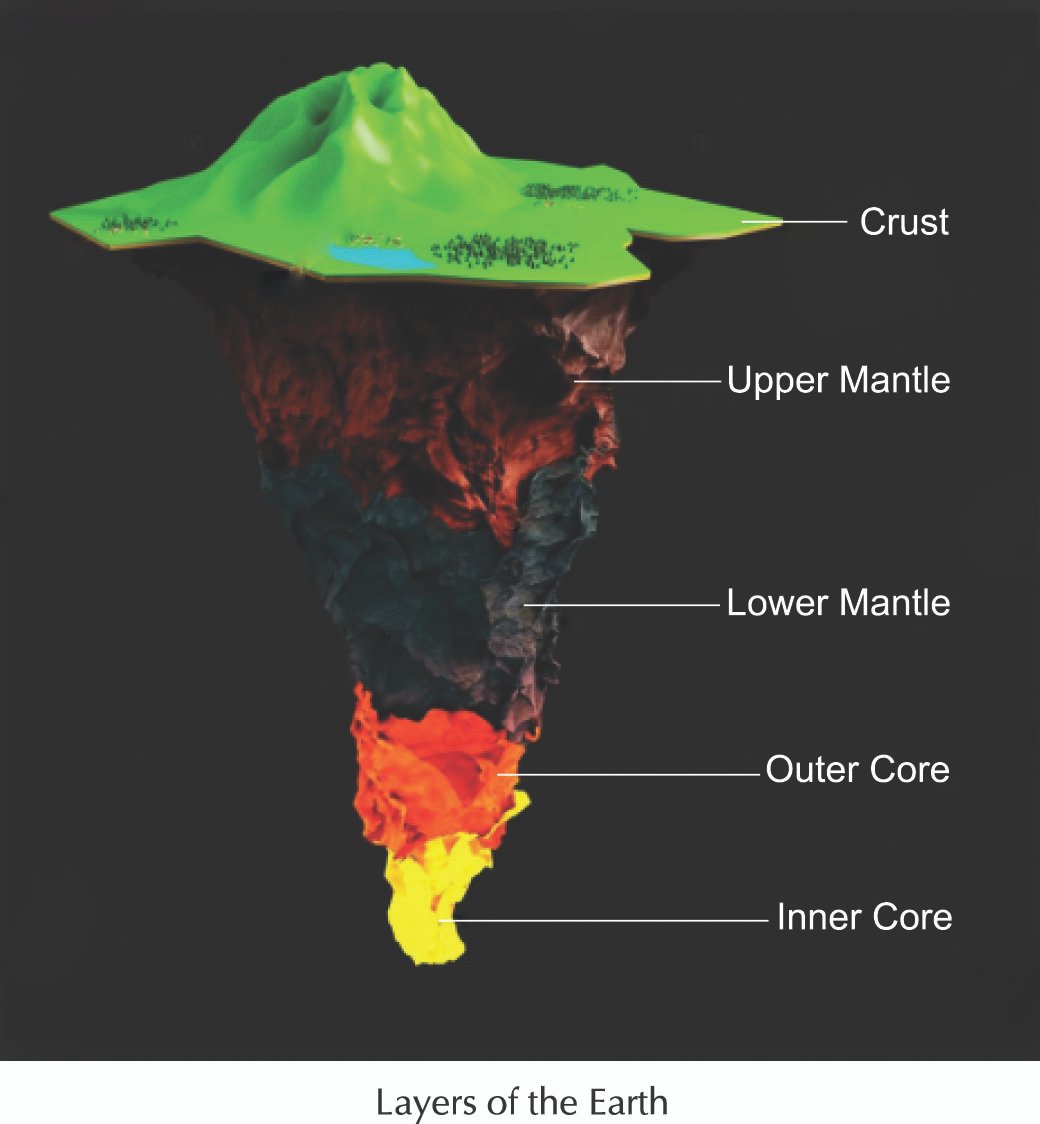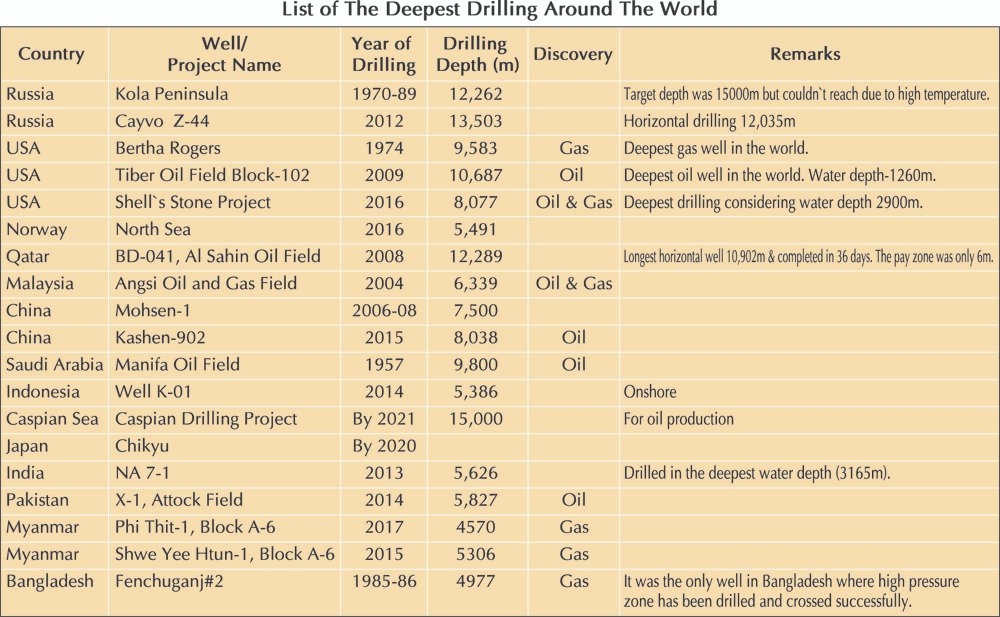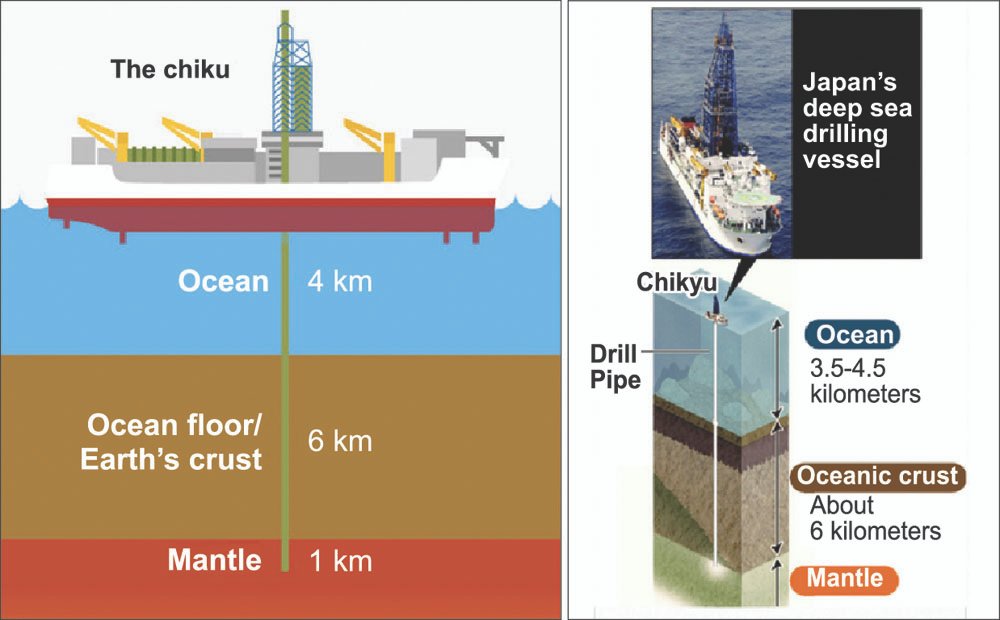
Drilling into the earth is done for a number of reasons – some are exploratory, many for oil and gas, some for water, some for mining purposes, and some others for various reasons. As we explore the layers of the earth, we uncover many things and need to dig deeper into the earth’s uncharted regions, without knowing what we would find.
How low can we go? That’s the challenge taken up by the scientists around the world over the last five decades – drilling a well that will go deeper than before. The goal was the earth’s mantle. The mantle makes up40 percent or more of the planet, which has a radius of 6,440 km. The crust is just a tiny portion of the planet, averaging 5-40 km thick. Scientists took their first crack at the mantle in 1958 with Project Mohole. American engineers drilled through the Pacific Ocean floor off Guadalupe, Mexico. But couldn`t reach the mantle due to various reasons.

Russia
Kola Peninsula Well
In quest for drilling deeper, Soviet geologists took a challenge in 1970. The deepest research well ever drilled was in Russia. The well was located in the Arctic Circle and was drilled with the goal of reaching deep into earth's crust as much possible for scientific study. The drilling took place on the Kola Peninsula (Well# SG-3) at Murmansk in Russia. This drilling started in 1970 and had reached a depth of 12,262 meters in 1989. It took almost 20 years to reach that depth. The Kola Superdeep Borehole was just 9 inches in diameter. The target drilling depth was 15,000 meters. The Kola well was abandoned when encountered unexpectedly high temperatures about 180 degrees Celsius and the drilling could not be continued further. The heat wreaked havoc on equipment.
It was not for a discovery of oil or natural resources but an understanding of the layers and nature of the earth's crust, including seismic discontinuities, the physical and chemical compositions of the earth's crust, and improving upon the techniques of deep geophysical sound interpretation.

Chayvo Well#Z-44
In August 2012, Chayvo Well#Z-44 has been drilled at Chayvo Field located at offshore area from Sakhalin Island on Russia’s east coast which was the longest well. Using extended reach or horizontal drilling technology, the well was drilled to a depth of 13,503m with a horizontal reach of 12,035m.
USA
Deepest gas well
The Bertha Rogers well was an exploratory oil well drilled in 1974 at Washita County, Oklahoma in USA as the world's deepest gas producing well in the Anadarko Basin. After drilling for about a year and a half, the vertical depth reached at 9,583m. But the well encountered tremendous high pressure, about 25,000 psi, and a pocket of molten sulfur which destroyed the drill bit and the operation could not be continued further. The Anadarko Basin holds one of the most prolific natural gas reserves in North America. In 2010, the U.S. Geological Survey estimated that the Anadarko Basin held 27.5 Tcf of natural gas, 495 million barrels of crude oil and 410 million barrels of natural gas liquids.
Deepest oil well
In September 2009, drilled the deepest oil well at a vertical depth of 10,687m and operated in 1,260m of waterin the Tiber Oil Field at Keathley Canyon block#102, approximately 400 km southeast of Houston. The South Korean-built oil rig drilled one of the deepest oil well in history. Found oil in the multiple layers of Lower Tertiary reservoirs. The estimated Oil-in-Place was about 3.0 billion tonnes.
Deepest oil and gas well
It is one of the world’s deepest oil and gas project, operating in around 2,900 m of water in an ultra-deep area of the US Gulf of Mexico. The project started production in September 2016 from an FPSO facility. The project was Shell’s 2nd producing field in the Gulf of Mexico. The reservoir depth is around 8,077m below sea level with a production of around 50,000 barrels of crude per day from the field.
Norway
The deepest ever well in the Norwegian Continental Shelfby reaching a total depth of 5,491m in August 2016 while drilling the ultra-high-pressure, high-temperature well. Maersk Drilling has taken a 15,000 psi rig and adapted the equipment and procedures in order to drill a reservoir section.

Qatar
In May 2008, a new record for borehole length was established by the extended-reach drilling well BD-04A, which was drilled by Transocean for Maersk Oil in the Al Shaheen Oil Field in Qatar. It was drilled with a total measured depth of 12,289 m, with a record horizontal drilling of 10,902m in only 36 days. Amazingly, the horizontal section was drilled in a pay zone of only 6m thick reservoir.
Malaysia
Shell Malaysia and Petronas-Carigali drilled the deepest oil and gas well in Malaysia during August 2004. They drilled up to the depth of 6,339m which was located at Angsi Oil and Gas Field at offshore Sarawak, East Malaysia.

China
Well Moshen-1
Itis the deepest onshore exploration well in China with a completed depth of 7,500 m which is located at Junggar Basin. The well drilling begun in August 2006. Drilling and completion of well Moshen-1 not only resulted in significant geological discovery, but also promoted the progress of China's ultra-deep well drilling. The well was completed in 2008.
Well Keshen-902
China National Petroleum Corp. drilled Keshen-902 well in China's Tarim Oilfield, which was completed at the depth of 8,038m in January 2015. The drilling of Well Keshen-902 took about one year. It was an appraisal well and drilled by using rig of Chuanqing Drilling Engineering Company of China. The Well Keshen-902 is the deepest onshore well in China so far.
Saudi Arabia
The Manifa Drilling was set a new record when it finished drilling the deepest well in Saudi Arabia in 1957 to a total depth of 9,800m. It is the fifth-largest crude oil field in the world. Manifa Oil Field is in shallow waters in the southeast of Tanajib and about 200 km northwest of Dhahran.
Indonesia
Kerui Petroleum of China drilled deepest onshore well K-01 of Indonesia in 2014 and reached drilling depth of 5,386m which took 4.5 months to complete this well.
Caspian Sea
Kazakhstan and Eurasia formed a new oil consortium in a multi-billion Caspian Project in July 2017 for drilling a ultra-deep well about 15,000m in the central area of the Caspian Depression for the exploration and exploitation in the Caspian Sea. The consortium comprised of oil companies from Russia (Rosneft), China (CNPC), Kazakhstan (Kazmunay Gas), Azerbaijan (SOCAR) and Italy (ENI). The Caspian Depression has significant crude hydrocarbons resources of about 40-50 billion tons of oil equivalent.
Japan
Drill to the Earth’s Mantle
Japan has announced a plan to drill through the earth’s crust on 10 April 2017 and to reach the mantle. Despite multiple previous attempts and multiple boreholes of significant depth, we’ve never managed to drill far enough to see what lies beneath the Earth’s rocky crust. The new project is led by the Japan Agency for Marine-Earth Science and Technology.
The mantle is comprised of different material than the earth’s crust. Mantle material has a higher ratio of magnesium to iron than the earth’s crust, but contains less silicon and aluminum than our planet’s surface. We also know that the mantle slowly circulates thanks to convection currents.
The Japanese government is helping to fund the Chikyu expedition because the information can be used for earthquake prediction. Chikyu’s drill will have to pass through 4 km of water and 6 km of crust to reach the mantle. The Japanese team hopes to begin drilling by the early 2020s.
India
State-owned Oil and Natural Gas Corp has drilled the deepest well in search for oil and gas in the Krishna Godavari basin. ONGC's has set a world record for drilling well in deepest water depth by an offshore well. The well NA7-1 has spudded in exploratory block KG-DWN-2004/1 in east coast India at a water depth of 3165m on Jan 23, 2013. It was successfully completed the drilling up to the depth of 5625m.
Pakistan
Pakistan Petroleum Ltd (PPL) drilled a deepest well at Attock District in Pakistan and found oil.This field lies in the north-western region of Punjab. The drilling of first exploratory well# X-1 was in the Dhok Sultan Block, started in 2014. The well reached the final depth at 5,827m in November, 2015. A hydrocarbon-bearing zone was identified within the Lockhart formation, which flowed 468 barrels of oil per day. It is the deepest oil discovery in Pakistan and has opened up a new play in the western Potwar area.

Myanmar
Pyi Thit-1
Gas has been discovered at a deep water exploration well in Block A-6 of the Southern Rakhine Basin in the Bay of Bengal. The drilling began at the Pyi Thit-1 appraisal well in June 2017. The well, which is located in the south of Rakhine, was drilled to depths of 4,570m. A 63m column of gas was discovered at 3,542m. Following a drill stem test performed across a 29 meter section of the column, gas was found to flow at 50 million cubic feet per day.The discovery at Pyi Thit-1 comes after two other gas discoveries were made at Block A-6.
Shwe Yee Htun-1
The well reaches a total depth of 5,306m and in some 2,030m of water depth. The well has intersected a gross gas column of approximately 129 m and about 15 m of net gas play within the primary target interval. This exploration well was drilled in November, 2015. The discovery at Shwe Yee Htun-1 in Block A-6 has become the first exploration well in ultra deep water offshore of Myanmar and a historic discovery of gas in the deep water of Myanmar. It is the deepest well drilled in Myanmar so far.
Bangladesh
The deepest well in Bangladesh is Fenchuganj well#2 and drilled up to the depth of 4,977m by Petrobangla during the year 1985 and 1986 with a discovery of gas field. Also found presence of crude oil in different zones during testing.The field is located at Vatera in Kulaura of Moulavibazar District and 5km north-west from Baramchal Railway Station. Twooil zonesat4,937-4,950mand2,768-81mwereevaluatedtobeoilsaturated.DSTtoolwasrunin5 7/8inchopenholetothelowermostzone 4937-4950m. Thiszone couldn`t be tested duetotightholecondition. During testing of zone 3,064-3,085m, producedsomewaxyoilwithwater.Atwo metersinterval(2,777-79m)wasperforatedandsomelightoilalongwithgasflowed.The drilling experienced high-pressure zone at the interval 3,100m to 4,500m (approx.). It was the only well in Bangladesh where drilling in high-pressure zone has been crossed successfully. The target drilling depth was 5,500m for discovery of oil and gas but couldn`t reach due to some drilling hazards. The mud weight was used to control high-pressure zone in the range of 1.75 to 2.15 specific gravity.
Future Drilling for DeeperProspects in Bangladesh
It is suggested that the government should take proper initiatives and prepare special data packages for drilling deeper in search of oil and gas in the some of the discovered gas fields based on the information acquired through 3D seismic surveys by BAPEX. As for example, our largest onshore gas field is Titas. Gas reserve and resources of Titas has been increased substantially in 2012. BAPEX has identified some deeper gas resource potentials in the four layers at the interval 3,745m to 7,500m. Other fields could be Bakhrabad, Fenchuganj, Kailashtila etc. Besides, deeper drilling at Patharia, Sitakund, Sitapahar and Kasalong can be considered for oil prospects. In the discovered field, prospective oil and deeper gas layers are expected to be found below the high-pressure zone.
The formulation of some special incentives is needed to attract IOCs for carrying out deep exploration drilling in the onshore below the depth of 4,000m and may drill up to 7,500m. Because drilling in high pressure zone is a very much risky venture due to its complexity, substantially higher drilling cost compared to drilling up to high pressure zone. Besides, it needs more drilling time, using of higher capacity drilling rig (3,000hp) and wellhead equipment (15,000 psi) to control well pressure, higher capacity of mud pump for managing circulating system and to manage higher specific gravity of drilling fluid during drilling at the high-pressure zone.
The drilling below the high-pressure zones is definitely very difficult by BAPEX and it wouldn`t be wise to engage them alone in the future. It should be done by engaging reputed international oil and gas companies under PSC or through G-to-G contract along with special attractive package. The cost of drilling in the deeper prospects will be quite high though it would be much lower than the cost of offshore drilling or compared to the cost of LNG import.
Mortuza Ahmad Faruque;
Energy Specialist
Former Managing Director, BAPEX



